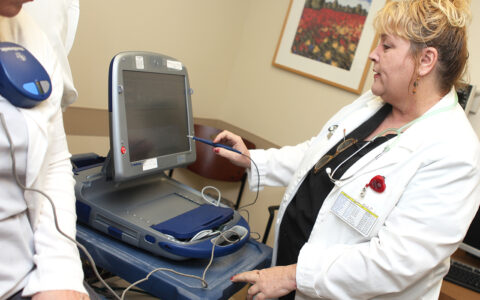A new study published in Pain Medicine reports that current smoking is associated with pain in every region of the body.
“We conducted a cross-sectional, population-based study to look at the association between pain and smoking, as well as other health factors,” said Byron Schneider, M.D., an author on the study and an assistant professor of physical medicine and rehabilitation at Vanderbilt University Medical Center. “We found smoking was most strongly associated with spine pain, followed by head, trunk and limb pain.”
The study is the first to describe the relative associations between smoking and pain in multiple body regions, and the first to demonstrate a specific relationship between smoking and trunk pain.
“Smoking was most strongly associated with spine pain, followed by head, trunk and limb pain.”
The Association Between Smoking and Pain
The association between smoking and pain is complex. Some studies have shown an increased incidence of pain in current and prior smokers, however other studies report no association between smoking and chronic pain. In contrast, animal models consistently demonstrate that nicotine can have short-term analgesic effects.
To better understand the direct impact of smoking on chronic pain, Schneider and colleagues conducted their own study, with the particular goal to control for confounding variables that undoubtedly influence the association.
Medical history was assessed from 2,307 individuals from the National Health and Nutrition Examination Survey (NHANES), a continuous national health survey conducted by the National Center for Health Statistics. Data was used from NHANES 2003-2004 because, in addition to standard health data such as smoking history and physical activity, it included a unique bodily pain questionnaire.
The study found no significant relationship between gender and smoking status, nor alcohol use and smoking status. However, there was a significant relationship between ethnicity and smoking status, education level and smoking status, and several medical variables and smoking status.
After adjusting for these covariates, the authors found smoking to be significantly associated with spine pain (OR = 2.98), head pain (OR = 2.47), trunk pain (OR = 2.17) and limb pain (OR = 1.99).
The Theoretical Basis
According to Schneider, one theory to explain why it is people who smoke have low back pain has to do with peripheral anatomic changes that may occur due to smoking.
“The intervertebral discs that lie between the vertebral bones have very poor blood supply and they are a common cause of low back pain,” Schneider said. “It’s been postulated that if you superimpose on that another condition, smoking, which is also known to compromise blood flow, maybe that exacerbates the pain.”
However, intervertebral discs are a structure unique to the spine, so why smoking is associated with pain elsewhere in the body is less clear. “Showing that people that smoke are a little more apt to hurt not just in the low back but across the body suggests that there are other mechanisms at play,” Schneider said. “That is an important takeaway from this research.”
Mitigating the Relationship
Now that we know of the association between smoking and pain, Schneider says the next step is to identify practices, tools or interventions to mitigate those relationships and lessen the burden of pain on the population as a whole.
“The most obvious thinking is that if people who smoke are more likely to hurt, then maybe smoking cessation is a way to treat pain. But we still don’t know if that is the case,” Schneider said.
He added, “There’s a growing clinical field of integrated health models that focuses on all the other aspects of the experience of being in pain, and considers interventions like mindfulness and behavioral therapy. The more we understand what causes pain, the better we can apply these sorts of interventions.”
“If people who smoke are more likely to hurt, then maybe smoking cessation is a way to treat pain. But we still don’t know if that is the case.”





